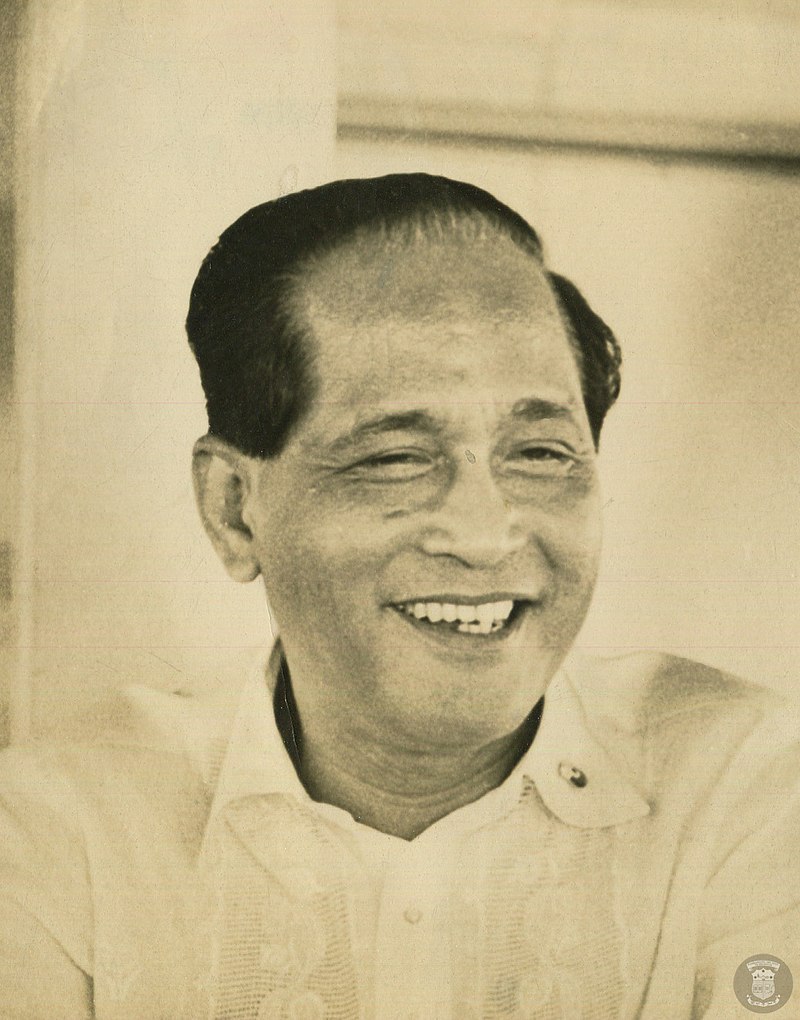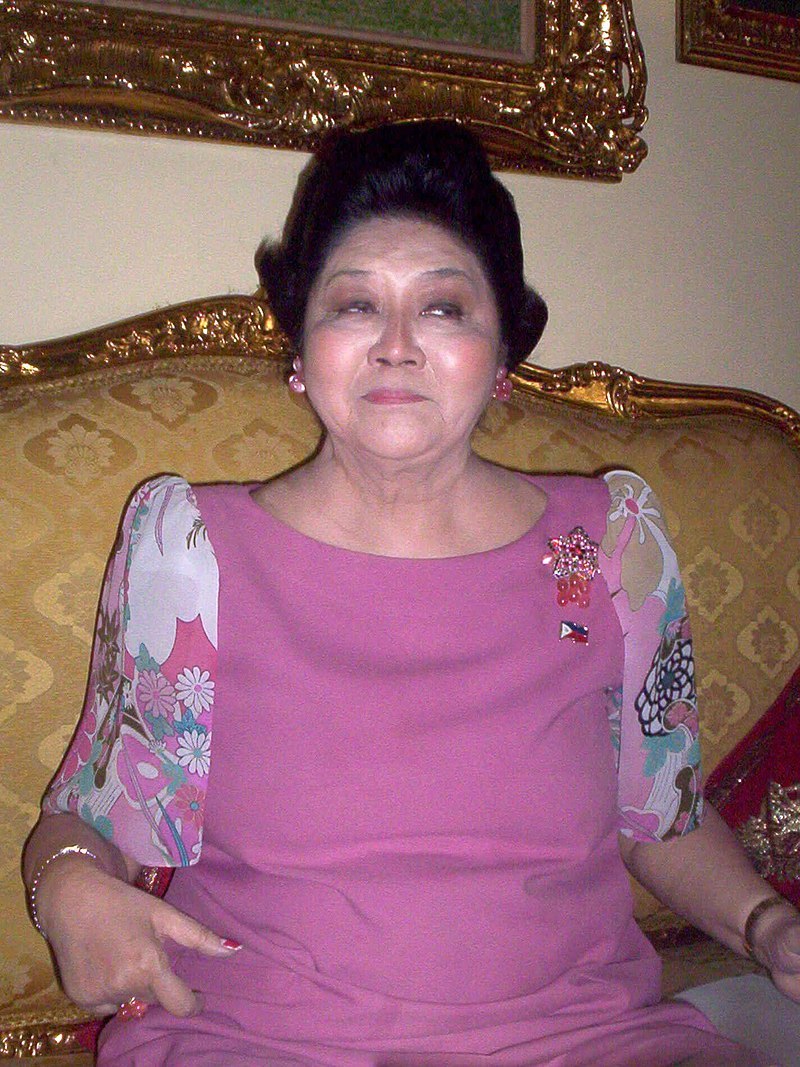In the first part of this series on Misogyny, we discussed a 2013 Philippine Daily Inquirer column by Rodel Rodis, a Filipino-American attorney, who claimed that there is no word for misogyny in Tagalog because the concept of misogyny is alien to Filipinos. We followed it with examination of former president Rodrigo Duterte’s public stunts and speeches that are the paragon of misogyny. And we finished by discussing how misogyny might be a common trait of many populist autocrat around the world. But let’s go back to the Philippines now and take a look at the broader context of misogyny in the country.
Presidential misogyny of the past
As you might suspect, Duterte wasn’t the first misogynist Filipino president. You can read about this in a 2021 paper on machismo, misogyny, and the language of toxic masculinity in Philippine presidential discourse by Gene Segarra Navera, a senior lecturer at the National University of Singapore.
Of course, Erap is an obvious example with his macho image and bragging about having multiple girlfriends. But let’s go even deeper.
Ferdinand Marcos in 1986 said this about his opponent Cory Aquino:
“A woman’s place is in the bedroom.”
Carlos P. Garcia (1957-1961) delivered a speech in 1959 before the Civil Assembly of Women in the Philippines, saying:
“The women are, therefore, called upon to start the early training and discipline of our children to ensure the wholesome growth of a good citizenry. It is a truism that men in the country are as strong as the women make them.”
In short, child rearing is delegated to women, and if there’s a sign of weakness in men, it is because women are not good enough at carrying out their responsibility.
Manuel L. Quezon, the first president of the Commonwealth of the Philippines, addressed women in his speech upon signing the Woman’s Suffrage Plebiscite Bill in 1936:
“This is not their opportunity to be meddling in politics every day, attending meetings, and making noise which is unbecoming to ladies.”
In other words, fine, you can vote, but don’t you dare to go into politics.
Misogyny in society
And it’s definitely not just the presidents who make misogynistic statements.
In 2016, the Movie and Television Review and Classification Board (MTRCB) summoned the executives of the TV show “Eat Bulaga!” over the victim-blaming remarks made by co-hosts Senator Tito Sotto and Jose Manalo on July 9.
The female winner of the show that day shared that she had been taken advantage of by her husband’s friends while she was drunk.
Sotto and Manalo didn’t miss this opportunity to jump to conclusions and blame the victim:
Sotto: “Kababae mong tao, pa-shot-shot ka?”
Translation: “You’re a woman and you’re doing shots?”
Manalo: “Anong suot mo? Naka-shorts ka, ‘no?”
Translation: “What were you wearing? You were in shorts, weren’t you?”
Sotto: “Naka-shorts habang nagsa-shot?”
Translation: “Wearing shorts, while doing shots?”
It’s not only politicians or TV personalities who engage in misogyny, but also regular people. According to Rappler’s analysis of comments under Facebook posts between January 2016 and mid-April 2022 that mentioned Leni Robredo who ran for the president and Sara Duterte who ran for the Vice-President, both were targets of misogynistic attacks.
The 2023 UN Women report on big data analysis on hate speech and misogyny in Bangladesh, Indonesia, the Philippines, and Thailand found that prominent words and expressions in the misogynistic online discourse in the Philippines include, among others: pokpok, puta (both meaning ‘whore’), feminazi, dress modestly, and weak.
This is confirmed by a 2022 study done by Febeleen Rivera and Dexter Adriatico from Mariano Marcos State University who found that out of 1,500 comments under 20 posts on Ivana Alawi’s Facebook page – she is the most followed Female social media influencer in the Philippines – over 11 percent of the comments exhibited sexist language, including insults like pokpok and explicit sex objectification.
According to the survey conducted by the United Nations Development Programme between 2017-2022, 99.5% of Filipinos have a bias against women. 99.5% – almost everyone. Of course, the degree of bias each individual person holds against women will range widely, and there is always a possibility of flaws in the survey methodology design, but the overall figures are nevertheless astonishing.
For example, 77.81% of Filipinos believe that men should have more right to a job than women and that men make better business executives than women do. Then, 43.61% believe that university education is more significant for men than women.
And it’s not just men who have these biases against women, but women themselves as well. 99.67% of Filipino women hold biases against women, according to the survey.
A good example of this would be Imelda Marcos who said in 1986:
“I am very aware of my place as a woman… Women have their place somehow at home.”
Corazon Aquino, according to her, is
“the complete opposite of what a woman should be.”
And another quote from the same 1986 Los Angeles Times article:
“Women, she added, are incapable of holding political office.”
What happened to Congresswoman Marcos? Did she forget about it? Or did she turn into “the complete opposite of what a woman should be”? Fascinating.
And this is happening not only in the Philippines. About 90% of people around the world also have biases against women according to the same study.
Legalized misogyny
Misogyny in the Philippines is also institutionalized in its legal system, as there are laws treating men and women differently.
Article 247 of the Revised Penal Code of the Republic of the Philippines on Death or Physical Injuries Inflicted Under Exceptional Circumstances states this (note the use of the masculine pronoun):
“Any legally married person who, having surprised his spouse in the act of committing sexual intercourse with another person, shall kill any of them or both of them in the act or immediately thereafter, or shall inflict upon them any serious physical injury, shall suffer the penalty of destierro.”
By the way, destierro, the punishment described here, is simply banishment, or prohibition from entering certain areas specified in the sentence, ranging between 25-250 km from a designated place. So, you simply can’t go back closer than 25 km from where you killed your wife and her lover. For a while. That’s it, that’s the law.
But there’s more in the same Article 247:
“If he shall inflict upon them physical injuries of any other kind, he shall be exempt from punishment.”
And there’s even more:
“These rules shall be applicable, under the same circumstances, to parents with respect to their daughters under eighteen years of age, and their seducers, while the daughters are living with their parents.”
So, you caught your daughter – not son – your daughter having sex with her seducer – in other words, her boyfriend. Even the choice of words here is deeply misogynistic. It implies that a daughter cannot have a lover or engage in a sexual relation out of her own will and initiative, – she must have been seduced! So, you catch your daughter under 18 years old having sex, and you kill her – then you just get banished. You beat her up, – you get no punishment at all. No need to mention that of course there’s no such law on sons being caught with their “seducers”.
Other laws also discriminate against women, punishing them more harshly than men for similar acts. Article 333 of the Revised Penal Code defines that adultery is “committed by any married woman who shall have sexual intercourse with a man not her husband and by the man who has carnal knowledge of her, knowing her to be married”. You just need to prove that an offending wife has had a sexual relation with another man to convict her of this – well, crime, supposedly. And the wife and her lover can be held criminally liable for each act of adultery. In other words, every time they have sex they can be prosecuted.
Concubinage on the other hand is defined in Article 334 as committed by a husband under one of the three conditions: 1) keeping a mistress in the conjugal dwelling, 2) having sexual intercourse under scandalous circumstances with a woman who is not his wife, or 3) cohabitating with her in any other place. Unlike adultery, it’s not enough to just prove that your husband had sex with another woman. And you cannot hold an offending husband liable for each act of sexual intercourse with another woman, unlike a wife.
There is also a difference in the penalties. A wife and her lover both can sentenced to imprisonment ranging from 2 years 4 months and 1 day up to 6 years. A husband on the other hand can be sentenced only to imprisonment ranging from 6 months and 1 day to 4 years and 1 day. And his concubine can only be sentenced to destierro, or banishment.
These laws still exist in the Philippines in spite of the fact that the 1987 Constitution provides that “The State recognizes the role of women in nation-building, and shall ensure the fundamental equality before the law of women and men” (Article II, Section 14).
And in the Republic Act No. 9710 or the 2009 Magna Carta of Women, the Congress of the Philippines acknowledged the fact that these laws – Articles 247, 333, and 334, among others – are discriminatory to women and “[t]he state shall take steps to review and, when necessary, amend and/or repeal” them within 3 years after the Act took effect.
Oh yes, and there is still no legal divorce in the Philippines. So you can imagine how that affects people in domestic abuse situations.
Rodel Rodis’s own misogyny
So, Rodis’s claim that misogyny is alien to the Philippines is clearly contradicted by numerous examples from the Philippine history, modern media, online discourse, opinion polls, and legal landscape. Moreover, Rodis himself fails to recognize subtle forms of misogyny even in some of the examples he gives in the same article in the Philippine Daily Inquirer. He mentions a brothel in Pampanga that was shut down for “provid[ing] young girls as prostitutes”, only to reopen the next day by order of a local judge. He then writes about this proposed solution to the problem of children sex trafficking in the Philippines:
“Instead of using contraception or selling daughters into prostitution, both of which the Church condemns equally, another alternative has been offered by Bishop Gilbert Garcera of Camarines Norte. The good bishop encourages his flock to produce daughters he said are destined by God to be the caregivers of the world or to be the “good wives” of foreign men in countries that have low population growth.”
Sure, this statement is not as bad as Duterte’s comment about shooting women in the vagina to render them useless. But this perspective reflects deeply ingrained misogynistic attitudes that devalue women’s autonomy and reduce their roles to caregiving and marriage.
Not seeing this, especially for someone who is acclaimed as a “true Vagina Warrior” by the Foundation for Filipina Women’s Network for “devot[ing] countless pro bono hours in helping women and girls in domestic violence situations and low-income clients”, is ironic.
It’s like, I’m not a racist but… I’m not a misogynist but Filipinos should produce daughters who are destined by God to be the good wives of foreign men. Sure.
OK, I must apologize for making you hear and read all the hateful statements and comments made by all the pleasant people quoted in these first two parts of the series on misogyny. But it was necessary to be able to approach the question, ‘What is misogyny in Tagalog?’, which we will tackle in part three.









Leave a Reply